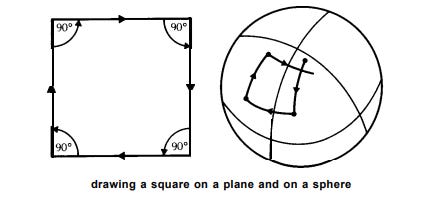In the Tao of Physics by Fritjof Capra, there is an interesting notion about the abstraction of physics (specifically in the formulation) and what is really happening in sub-atomic space. Capra’s insight brought about a problem that I have been thinking about for years. It is based on my fiction writing and my relationship with the reader.
The Tao of Physics is a creative correlation between eastern philosophy and subatomic physics published in 1975 and reissued in the 1980’s. He has some fascinating insight into the connections and the problems that philosophy and physics share. He went on to write a book called The Web of Life based on system thinking of environments, species, and humans. Most of the Tao of Physics is based on the ambiguity of language and symbols in writing and math. He defines the world of symbols and expression as an approximate map or reality. “Since words are always an abstraction, approximate maps of reality, the verbal interpretations of a scientific experiment or of a mystical insight are necessarily inaccurate and incomplete”(Capra 41).
What does that mean in physics? Well “we know a square has four side with each corner turned at a 90-degree angle from another. Simple geometry can help us draw a simple picture. Now “go to a globe and draw a square onto the round ball. Pull the page off the globe and lay it flat, the square doesn’t have its 90 degree corners any more. The box is altered. What that means is that maps are not exact because they are all based on the curve of the earth. Look at the top or bottom of a map and see how the Arctic and Antarctic looks like vast continents, but it’s a distortion of putting a round ball on a flat surface. The representation changes when it is produced flat.
So, that is the concept of the “approximate map of reality” that even in science things are not always what they seem. That isn’t to undermine science, it just shows that we have to use a variety of ways to explain science with the tools we have. If we look at symbolic language and expression, we never have exact, measurable data, but certain correlation to thoughts, ideas and mental images. No one sees “the elm tree” the same way, we all have context to our lives, reading, thoughts, and experiences.
As a younger writer, I always assumed that my writing would be envisioned and captured in the mind of the reader just like I see it in my mind. But as I think about the approximate map and the act of creativity, I was wrong. We are sharing an approximate experience between writer and reader that may only be loosely connected to my vision of the art. Of course we know this as interpretation and understanding of abstract words into ideas and images.
This “approximate map of reality” is what we work in as a medium for creative expression. It starts at a micro-level and moves up the entire chain of creative writing. Words are the building blocks of what we do, however, every person has different mental images for different words. That is the first level of approximation. Yes, we all have a universal understanding of what a “tree” represents, but everyone pulls up their experience with the word “tree” when they see it. This concept of “approximate maps of reality” is why I don’t watch movies that come from my favorite books. Why would I alter and change my mental correlations to the characters, plot and themes by having someone else push in on my creativity? It is always a disappointment. It is like layering two or three maps over one another until it gets really hard to see anything.
We can not give a reader an exact copy of our imaginary world because as soon as it is read by someone else, we have shifted from the perfect geometrical square to an “approximate map” in words and expression. But, this shouldn’t be discouraging to a writer. It is inspiring. I have always wanted readers to see the same images I see when they read my work; however, lately I feel that the “approximate map” is a connection where readers can now tell me what they see. Themes, plot, and character development works better when each reader can connect to different elements of their lives. There is no perfect — merely an artistic rendering of words that have different meaning to different people.
Seeing this idea means letting go in editing and crafting words. You won’t find the perfect word, just be concise and meaningful. At some point, in those lines of writing, people have to read them and make their own connections. Over the years, I needed to let go of the controlling idea that the reader must see what I see. Why? Because maybe they see clearly something new, something insightful, collaborative. Our language is too ambiguous, and our craft is too porous for that. What comes from the “approximate map” is an understanding of the human condition, the world and the exploration of universal truth. We are not drawing clear and distinct lines on paper, we are casting direction to our approximate maps giving the reader illumination to explore our expressions and sail constantly towards the equator of our creative soul.



